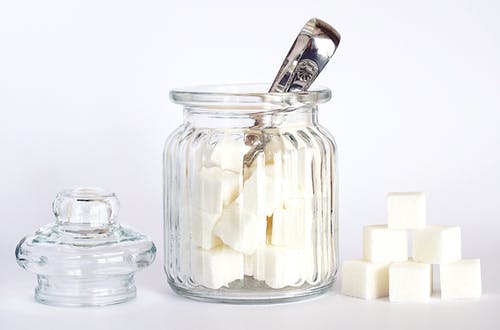Unraveling the Enigma of Sugar Dependency: A Quintet of Revelations
Embarking on a reminiscence of yesteryears, envision a time when the allure of saccharine delights held sway over my daily existence. Unpredictable cravings, impervious to temporal constraints or emotional nuances, would beckon. Chocolates that dissolved like poetry on the palate, aromatic biscuits and cookies, ostensible “fruit” elixirs, and the frozen ecstasy of ice cream—each sweetness constituted a consummate pleasure.
Despite my attempts to subdue these desires, the allure of sugar proved insatiable. I naively perceived seemingly benign treats like granola bars or fruit yogurts as distinct from the indulgence of cream-laden confections or crispy wafers. Unbeknownst to me, the omnipresence of sugar, clandestinely woven into products labeled “healthy and dietary,” insidiously thwarted my weight loss endeavors, kindling an augmented penchant for sugary indulgences. The verity of sugar addiction gradually unfolded.
Upon liberating myself from the clutches of refined sugar, a metamorphosis ensued. The candy aisle lost its magnetic pull, and my palate developed an affinity for vegetables. When the hankering for sweetness persisted, it found solace in the embrace of fruits or homemade delicacies devoid of extraneous additives and the spectral presence of white sugar.
This paradigm shift in habits precipitated a cascade of transformations—weight loss, a rejuvenated complexion, heightened energy levels, and an overall sense of well-being.
For those contemplating a reduction in sugar intake, intrinsic motivation often proves elusive. Unraveling six compelling reasons to embark on this journey serves as a potent catalyst, elucidating the telltale signs of an excessively saccharine diet.
 |
|
Addiction to sugar and it’s side effects. Here are 6 reasons to choose sweets. |
Sugar Dependency and Its Ramifications
🔸 Accelerated Skin Aging
Sugar exerts a deleterious influence on collagen and elastin, pivotal proteins orchestrating skin elasticity and vitality. Initiating the glycation process, wherein glucose and fructose amalgamate with proteins and lipids, sugar propels the accelerated aging of the skin. Collagen molecules, ensnared in this glycemic entanglement, encounter impediments in their reconstruction following damage.
The skin, a fragile canvas, manifests the initial harbingers of aging. Yet, it is imperative to acknowledge that glycation extends its insidious influence to internal organs, adhering to them with comparable tenacity. Mitigating the aging trajectory mandates the exclusion of unhealthy dietary elements—ranging from sugary beverages and confections to flour-based products. Sustaining optimal hydration, a salient component of this narrative, ensures the skin’s hydration and resplendence.
🔸 Heightened Appetite
Sugar, akin to a narcotic agent, begets an insidious cycle wherein heightened consumption begets augmented cravings. Succumbing to this addictive cycle renders relinquishing sugar progressively challenging. Operative through a nexus of rewards and cravings, sugar addiction precipitates weight gain, mood oscillations, compromised complexion, and a diminishing state of health. Redressing this habituation necessitates strategic interventions—substituting processed snacks with fruits and gravitating towards satiating foods such as lentils, bananas, or oatmeal.
🔸 Dental Dystopia
Inhabiting your oral cavity, bacteria thrive on a sugar-rich milieu. The metabolic byproduct, acidic in nature, exerts a corrosive impact on enamel and underlying dentin, inducing damage. Earlier paradigms advocated a sugar contribution not exceeding 10% of the energy source; contemporary wisdom advocates a daily limit of 2-3%. Corroborative studies underscore an escalating likelihood of multiple cavities over time. Beyond confections, products harboring carbohydrates, fructose, and glucose contribute to dental deterioration. Prudent oral hygiene practices, including post-meal teeth brushing, emerge as a salutary approach.
🔸 Digestive Disquietude
Sugar ingestion disrupts the seamless functionality of the digestive apparatus. The advent of fructose may instigate a leaky gut syndrome, facilitating the translocation of undesirable substances from the small intestine into the bloodstream. This cascade eventuates in inflammation of vital organs—the liver, pancreas, and intestines—escalating the risk of malignancies.
Simultaneously, sugar exerts a perturbing influence on the symbiotic balance of intestinal flora, potentially inducing insulin resistance. Substituting sugar with high-fiber victuals and probiotic-rich fare assumes significance in preserving gastrointestinal equilibrium.
🔸 Visceral Fat Accumulation
Essential to discern is the diet-dependent nature of visceral fat, wherein exercise proves less efficacious than dietary modulations. Therefore, the cornerstone of the daily menu necessitates wholesome selections, mitigating sugar content.
🔸 Inflammatory Incitement
Studies underscore a heightened risk of chronic inflammation in individuals, particularly children, consuming refined sugar and processed foods. This vulnerability extends into adulthood. Prolonged consumption of high-sugar beverages, exemplified by sodas and carton juices, emerges as a potential precursor to gout and heightened joint inflammation in women. Rigorous scrutiny of dietary patterns, prioritizing vegetables and fruits, assumes paramount importance in averting this proclivity toward inflammation.
In unveiling the intricate tapestry of sugar dependency and its multifaceted repercussions, an invitation surfaces—a beckoning toward conscientious dietary choices, fostering a harmonious synergy between indulgence and well-being.
